Source - http://irisharchaeology.ie/2013/02/a-hoard-of-16th-and-17th-century-childrens-toys/
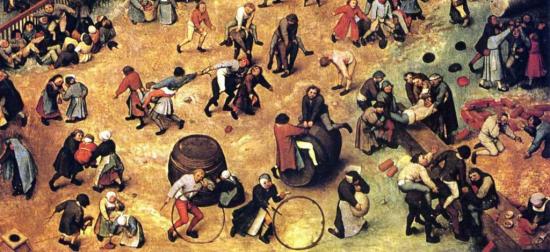
Detail from Children’s Games by Pieter Bruegel the Elder, c. 1560
In the course of my research of VikingAge woodcraft, I somewhat unexpectedly turned up information about a most delightful archaeological find: an entire hoard of children’s toys, found at Market Harborough parish church, England[i]. A charming stash of the everyday playthings of sixteenth or seventeenth century children, the hoard throws a rare spotlight on the material culture of children in the archaeological record.
The hoard was revealed when construction workers unblocked an old disused stairwell at the church and discovered that the space had been stashed with over 200 toys. Staff at Harborough Museum dated the collection to the late Tudor and early Stuart era (1570-1630). The hoard was comprised of street toys, specifically 117 objects known as tipcats, 89 spinning tops, thirteen sap whistles, six knucklebones, seven balls, five whip handles, two possible teetotums (a kind of spinning top) and eight wooden cylinder objects that were also thought to be toys. The finds were made mainly from wood – willow, ash, hazel, alder and fruitwoods, cut straight from the hedgerows or out of a carpenter’s workshop – with some bone, clay, leather and fabric also used.
x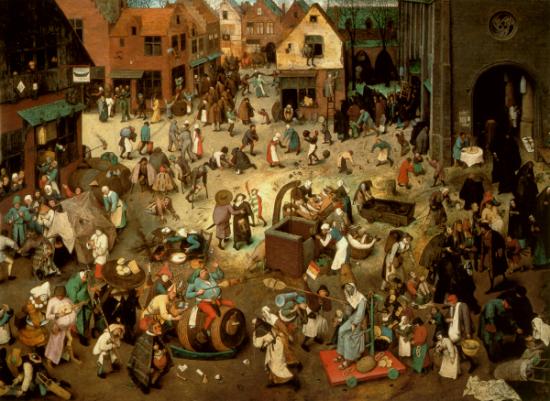
The Fight between Carnival and Lent by Pieter Bruegel the Elder
The toys were described as ‘street toys’ and a quick review of the collection certainly brings to mind a hustle and bustle of rowdy out-of-doors play. The broadly contemporary painting The fight between Carnival and Lent by Pieter Brueghel the Elder gives a vivid impression of toys like these being used in a busy Dutch street (see previous image). Additionally, the same artist has left us a fascinatingly insightful inventory of as many as eighty types of games played by contemporary children in Holland his painting Children’s Toys. Interestingly, the church where the toys were found is located right next to a Grammar School which was in existence at the time the toys would have been used. This gives an idea as to the source of toy-owners; but how did the toys come to be blocked up in a disused stairwell?
x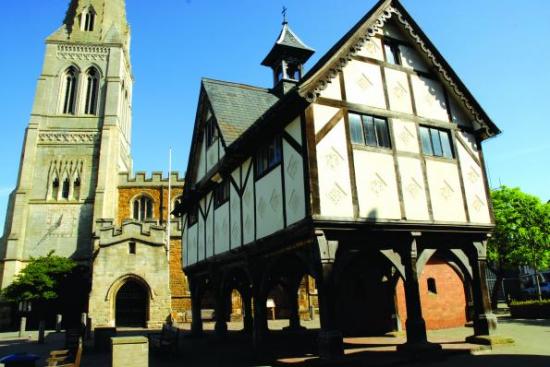
Market Harborough church and the old timber framed Grammar School
THE ROOD SCREEN
The blocked stairwell where the toys were found had formerly given access to the Rood Screen. In medieval churches, the rood screen divided the nave and the chancel and had a walkway at its top, accessed by stairs on either side (see image below). At Market Harborough church, this was demolished in 1752. It was suggested that the toys made their way into the stairwell having been swept there from the rood screen walkway, onto which they had been tossed, presumably at the hands of irate adults.
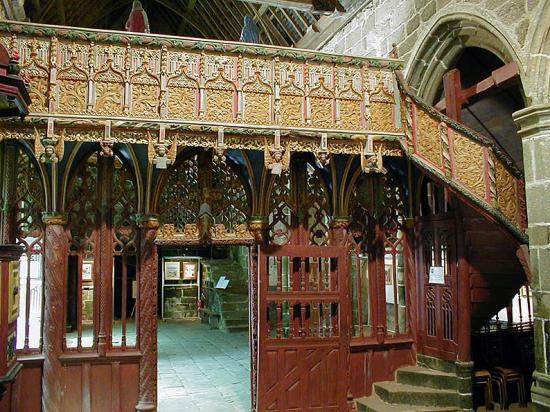
A rood screen
THE BALLS
The balls were of a consistent size, of about 8cm in diameter, made mainly of a fibrous material held together with clay and covered with red cloth or leather. Two were naturally-shaped flint nodules, and two were made of clay.
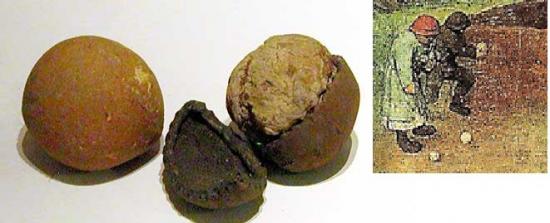
The balls found at Harborough Market church (© Leicestershire County Council) and a detail from ‘Children’s Games’ showing balls being thrown (c. 1560 AD)
THE SPINNING TOPS
The tops were found in a variety of shapes and sizes, in two basic types: the whipping top and the peg top. The peg top is thrown, and can have a cord wrapped around it to provide extra spin when it leaves the hand. The “peg” is an inset, which can be made of metal, to reduce friction at the point of contact with the ground. A whipping top is kept in motion by use of a whip and five whipping handles were found as part of the hoard. Most of the tops were hand-carved, but some had been turned on a lathe. Interestingly, the tops shown in the image are very reminiscent of those found at Viking Dublin.
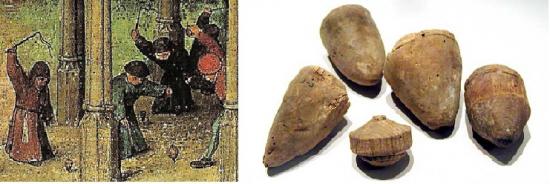
A detail from ‘Children’s Games’ showing tops being spun (1560 AD) and the spinning tops from Harborough Market church (© Leicestershire County Council)
PART.2